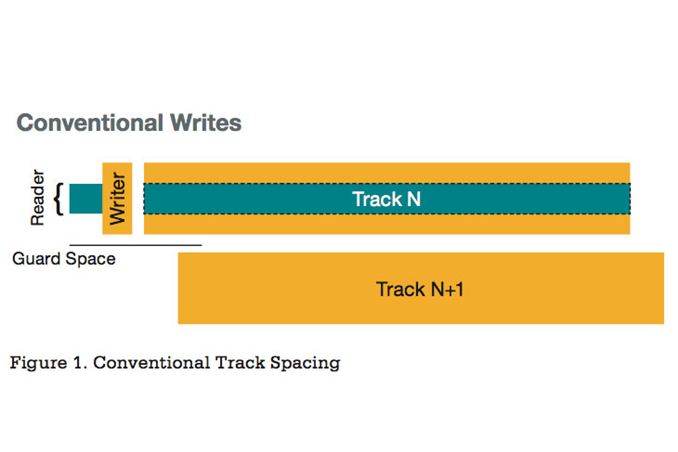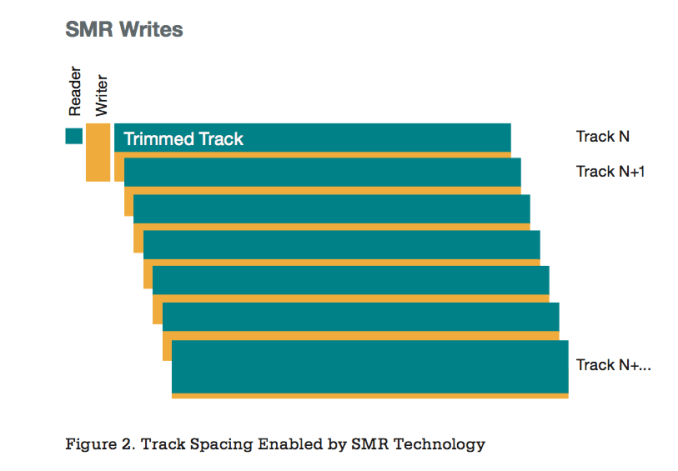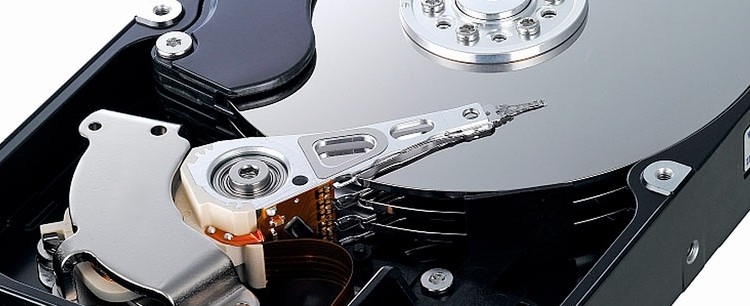Seagate has tried its hardest to shrink the read/write heads of hard drives even further, but with the latest 1 TB 3.5-inch platters, the company believes they've hit a physical brick wall: the head simply can't get any smaller. The same goes for the tracks on the platters, which Seagate claims are as close together as physically possible.
Essentially this means that without increasing the amount of platters in a drive, producing drives with capacities above 4 TB (four 1 TB platters) has become rather hard. To get around these physical limits, Seagate has looked into changing the architecture implemented, coming up with Shingled Magnetic Recording (SMR).

Hard drive tracks are typically the size of the write heads, as they are larger than the read heads. However the only part of the track that the read head actually cares about is the central data band; there is guard space the width of the write head either side, which is there to reduce the chance of reading adjacent tracks. SMR takes advantage of this, overlapping tracks to reduce the guard space, allowing areal density to scale without the need for shrinking read/write heads.
A downside to implementing SMR on a hard drive concerns writing data to a series of tracks that already contain some data. As the tracks overlap, and the write head is now the width of more than one track, writing to one track can destroy the data in an adjacent track. This results in all subsequent tracks needing to be re-written, which reduces performance.

Seagate's SMR design groups tracks into bands, with each band breaking the "shingled" layout so that the entire disk doesn't need to be re-written after writing to just one track. That said, some re-writing will still need to occur, and it's not clear exactly what effect that has on drive speed compared to non-SMR disks.
Thanks to the technology, Seagate are hoping to increase 3.5-inch platter density from 1 TB to 1.25 TB, paving the way for 4-platter, 5 TB SMR drives in 2014. Apparently Seagate has already shipped one million SMR-enabled drives, and are hoping that by increasing the platter density, performance is not degraded compared to their existing SMR HDDs.
